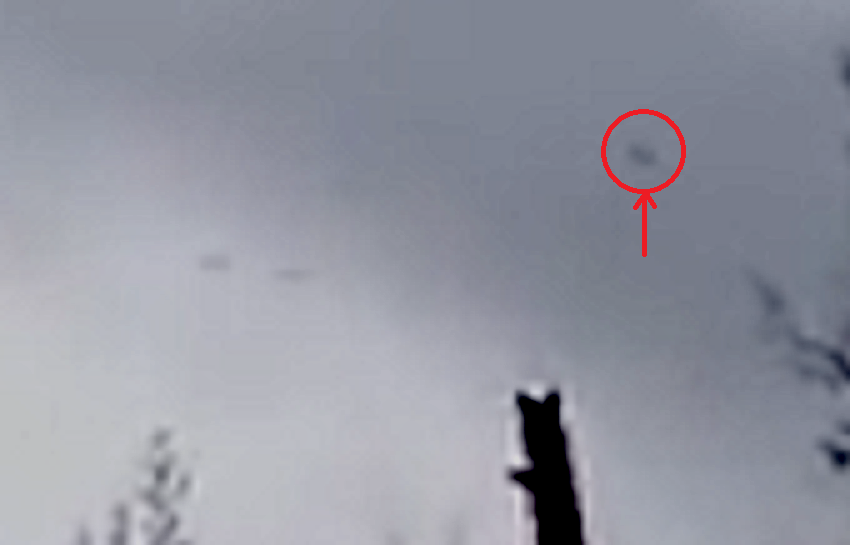It looks like you're using an Ad Blocker.
Please white-list or disable AboveTopSecret.com in your ad-blocking tool.
Thank you.
Some features of ATS will be disabled while you continue to use an ad-blocker.
share:
a reply to: Donkey_Dean
Yes. Because they shed their cosmic velocity and fall vertically. And they're stones.
www.meteorite-list-archives.com...
We see examples undamaged by impact all the time.
Yes. Because they shed their cosmic velocity and fall vertically. And they're stones.
On Wed, Mar 7, 2012 at 1:58 PM, Chris Peterson wrote:
> It depends on the mass of the body. But realistically, under "typical"
> conditions that might lead to meteorite production, I think it's safe to say
> that this happens almost instantly.
>
> For example, a 100 kg stone that survives to 20 km height will be
> experiencing a deceleration of ~1500 m/s^2. A 10 kg stone will experience
> ~4000 m/s^2. Of course, no stone is likely to survive the forces that would
> result without breaking up. You need to play all sorts of games with
> different parameters for mass, speed, and height to find survivable
> scenarios. They all produce a very short period of dark flight before
> terminal velocity.
>
> This is why the retardation point is typically overhead any strewn field,
> and you don't usually have meteorites significantly down field from the
> retardation point. In fact, wind during dark flight may move meteorites
> farther than their last bit of momentum did- and that can be in any
> direction.
www.meteorite-list-archives.com...
edit on 4/6/2019 by Phage because: (no reason given)
a reply to: r0xor
I'll mention this was filmed at the Albert Pike campground. The same that claimed 20+ lives in 2010.
en.wikipedia.org...
I'll mention this was filmed at the Albert Pike campground. The same that claimed 20+ lives in 2010.
en.wikipedia.org...
edit on 6-4-2019 by Donkey_Dean because: (no reason given)
edit on 6-4-2019
by Donkey_Dean because: (no reason given)
I think it's a bird and about the speed, here is a link about the chimney swift.
Chimney Swift
It has a range of habitat and has been clocked at up to 150mph. Highest confirmed horizontal flight speed is 64mph. Pretty fast to zoom by in the shot.
It has a range of habitat and has been clocked at up to 150mph. Highest confirmed horizontal flight speed is 64mph. Pretty fast to zoom by in the shot.
Aaaaand no one is questioning the " Pookie McDing Ding" title of the channel???!!
I see a couple birds, BUT paying attention to the OP's notes on the anomaly, and closely watching zoomed in, there is a very fast flying object zips
straight through underneath the big bird, and the small bird with flitting wings.
Doesn't look like conventional flying object. Hard to determine anything without further enhancement. Too fast for any bird flying parallel to the ground.
Definitely interesting.
Doesn't look like conventional flying object. Hard to determine anything without further enhancement. Too fast for any bird flying parallel to the ground.
Definitely interesting.
I call into evidence..
Why is it trailing a random bird in the middle of nowhere in a National Forest in Arkansas? If you want to seriously consider it being a UFO, an intelligent being from another planet who travels here with technology or an other-dimensional or earthbound intelligent energy for lack of a better term, you should consider the logic of it.
If it can make it to planet Earth or appear and disappear when it wants to where it wants to, it has logic. More than we do. And it won't be chilling doing aerial moves with the birds at the state park for fun so you can accidentally get a blip of it on a video without trying to.
Areas where they're purported to be credibly sighted over time are military, industrial, aerospace, government geographic locations, or perhaps volcanos, major fault lines, sights of ancient ruins, sites that are sacred religiously and historically. This park does not fit the bill, and if some people died there in 2010, it wasn't creepy aliens getting them who only chill in the Arkansas National Park.
Why is it trailing a random bird in the middle of nowhere in a National Forest in Arkansas? If you want to seriously consider it being a UFO, an intelligent being from another planet who travels here with technology or an other-dimensional or earthbound intelligent energy for lack of a better term, you should consider the logic of it.
If it can make it to planet Earth or appear and disappear when it wants to where it wants to, it has logic. More than we do. And it won't be chilling doing aerial moves with the birds at the state park for fun so you can accidentally get a blip of it on a video without trying to.
Areas where they're purported to be credibly sighted over time are military, industrial, aerospace, government geographic locations, or perhaps volcanos, major fault lines, sights of ancient ruins, sites that are sacred religiously and historically. This park does not fit the bill, and if some people died there in 2010, it wasn't creepy aliens getting them who only chill in the Arkansas National Park.
It looks like a bird swooping underneath the higher flying one. However, after replaying the clip in slow motion, I thought that the object in
question split into two objects. Below, are the enlarged stills with the obvious bird in the video clip circled. Probably a video artifact, but I
thought it interesting enough to post....




a reply to: shawmanfromny
Its interesting enough that am going to have a look. You never know and there are worse ways to spend a day or two. This thing was headed to the ground in my book and fast. I think it was at least a 1/4 mile away and moving at its terminal velocity. An expert could give us a pretty good estimate of the speed which could give an idea of mass. Its a stone man and im gonna try to find it. It must have been huge to have been visible at all. May even be visible tree damage.
Its interesting enough that am going to have a look. You never know and there are worse ways to spend a day or two. This thing was headed to the ground in my book and fast. I think it was at least a 1/4 mile away and moving at its terminal velocity. An expert could give us a pretty good estimate of the speed which could give an idea of mass. Its a stone man and im gonna try to find it. It must have been huge to have been visible at all. May even be visible tree damage.
edit on 6-4-2019 by Donkey_Dean because: (no reason given)
a reply to: Phage
Well the place does neighbor Board Camp Ar. Well known for its orbs of light.
I have always thought it to be a meteor, but you know it could be a fast ass bird. Not sure what it was after but, it covered a few football fields in a split second. I grew up camping there. The place had turned into a ritual for thousands, and you generally could never find an open campground.
Thats where it got ugly. They clear cut some mountains up the way, and had built the campsites next to the river up at least a meter and a half. This broke that most golden of rules. If you are going to camp next to the river camp close enough that if water wakes you its not to late. Some 20+ folks mostly children didn't get wet until they were surrounded by meter and half deep torrents of water.
Long story short this place is now deserted for the most part, but special to many etc..
Well the place does neighbor Board Camp Ar. Well known for its orbs of light.
I have always thought it to be a meteor, but you know it could be a fast ass bird. Not sure what it was after but, it covered a few football fields in a split second. I grew up camping there. The place had turned into a ritual for thousands, and you generally could never find an open campground.
Thats where it got ugly. They clear cut some mountains up the way, and had built the campsites next to the river up at least a meter and a half. This broke that most golden of rules. If you are going to camp next to the river camp close enough that if water wakes you its not to late. Some 20+ folks mostly children didn't get wet until they were surrounded by meter and half deep torrents of water.
Long story short this place is now deserted for the most part, but special to many etc..
edit on 6-4-2019 by Donkey_Dean because: (no reason
given)
a reply to: TheTruthRocks
It flies behind the tree in the distance.
This video is in slow motion until the end.
It flies behind the tree in the distance.
This video is in slow motion until the end.
new topics
-
A fix for the Trans players in sports
Social Issues and Civil Unrest: 1 hours ago -
Petition Calling for General Election at 564,016 and rising Fast
Political Issues: 4 hours ago -
Rep. Alexandria O. Cortez Says Forcing People to Use The Correct Bathroom is Dangerous.
US Political Madness: 10 hours ago -
Cooperation zones
World War Three: 11 hours ago
top topics
-
France gives Ukraine license to fire long-range missiles at Russia
World War Three: 15 hours ago, 9 flags -
Petition Calling for General Election at 564,016 and rising Fast
Political Issues: 4 hours ago, 9 flags -
Rep. Alexandria O. Cortez Says Forcing People to Use The Correct Bathroom is Dangerous.
US Political Madness: 10 hours ago, 5 flags -
Ok this is some BS now WTH
Rant: 13 hours ago, 4 flags -
A fix for the Trans players in sports
Social Issues and Civil Unrest: 1 hours ago, 4 flags -
Cooperation zones
World War Three: 11 hours ago, 3 flags
active topics
-
Results of the use of the Oreshnik missile system in Dnepropetrovsk
World War Three • 175 • : Oldcarpy2 -
Rep. Alexandria O. Cortez Says Forcing People to Use The Correct Bathroom is Dangerous.
US Political Madness • 24 • : xuenchen -
Petition Calling for General Election at 564,016 and rising Fast
Political Issues • 22 • : gortex -
Post A Funny (T&C Friendly) Pic Part IV: The LOL awakens!
General Chit Chat • 7820 • : underpass61 -
France gives Ukraine license to fire long-range missiles at Russia
World War Three • 26 • : Oldcarpy2 -
A fix for the Trans players in sports
Social Issues and Civil Unrest • 7 • : Dandandat3 -
Ok this is some BS now WTH
Rant • 9 • : VariedcodeSole -
President-Elect TRUMP Picks Former Florida A.G. PAM BONDI to be U.S. Attorney General.
2024 Elections • 66 • : Xtrozero -
Biden's "Reckless" Decision To Escalate Russia-Ukraine War
World War Three • 126 • : BernnieJGato -
Cooperation zones
World War Three • 15 • : VariedcodeSole
